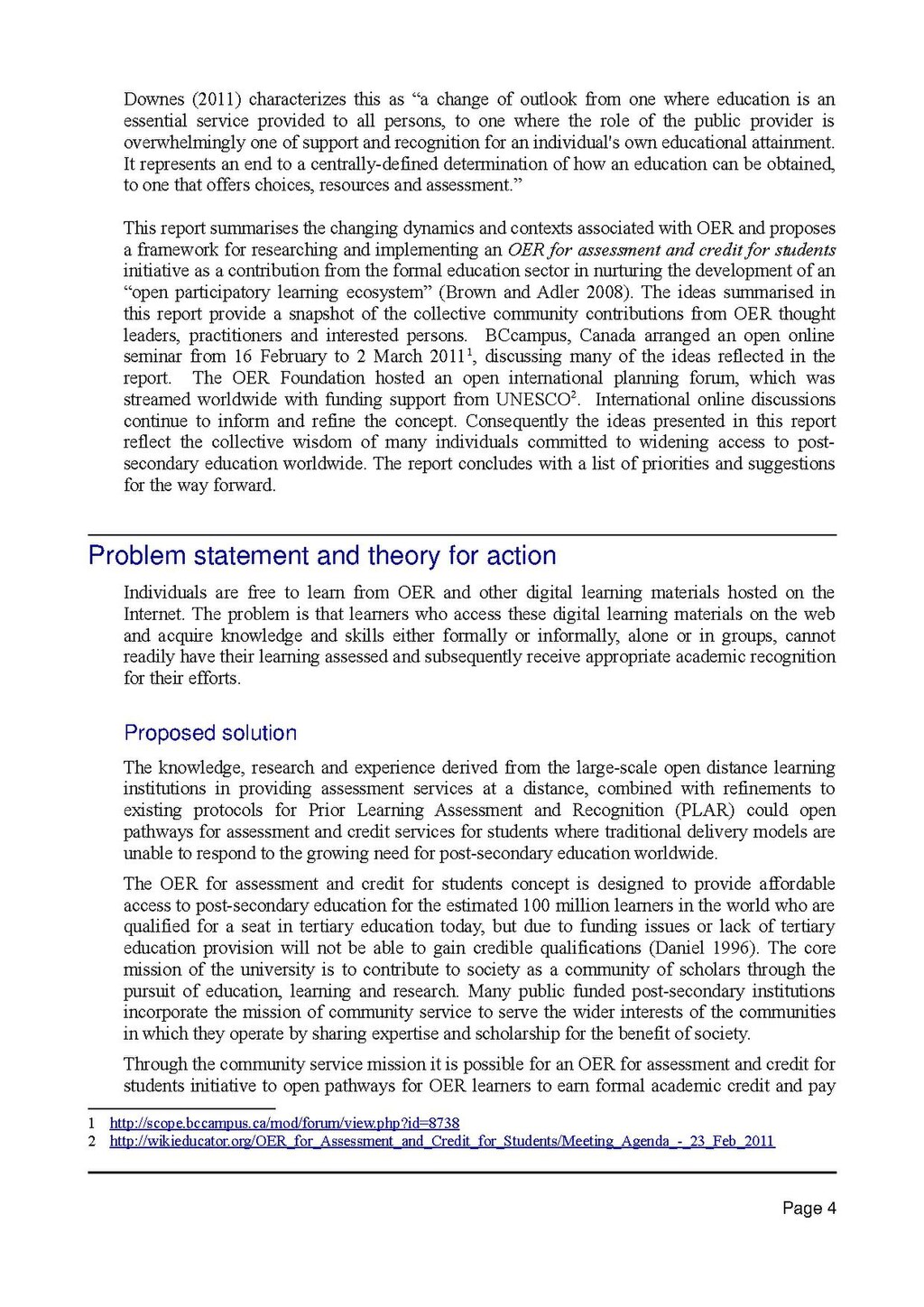Downes (2011) characterizes this as "a change of outlook from one where education is an essential service provided to all persons, to one where the role of the public provider is overwhelmingly one of support and recognition for an individual's own educational attainment. It represents an end to a centrally-defined determination of how an education can be obtained, to one that offers choices, resources and assessment."
This report summarises the changing dynamics and contexts associated with OER and proposes a framework for researching and implementing an OER for assessment and credit for students initiative as a contribution from the formal education sector in nurturing the development of an "open participatory learning ecosystem" (Brown and Adler 2008). The ideas summarised in this report provide a snapshot of the collective community contributions from OER thought leaders, practitioners and interested persons. BCcampus, Canada arranged an open online seminar from 16 February to 2 March 2011[1], discussing many of the ideas reflected in the report. The OER Foundation hosted an open international planning forum, which was streamed worldwide with funding support from UNESCO[2]. International online discussions continue to inform and refine the concept. Consequently the ideas presented in this report reflect the collective wisdom of many individuals committed to widening access to postsecondary education worldwide. The report concludes with a list of priorities and suggestions for the way forward.
Problem statement and theory for action
Individuals are free to learn from OER and other digital learning materials hosted on the Internet. The problem is that learners who access these digital learning materials on the web and acquire knowledge and skills either formally or informally, alone or in groups, cannot readily have their learning assessed and subsequently receive appropriate academic recognition for their efforts.
Proposed solution
The knowledge, research and experience derived from the large-scale open distance learning institutions in providing assessment services at a distance, combined with refinements to existing protocols for Prior Learning Assessment and Recognition (PLAR) could open pathways for assessment and credit services for students where traditional delivery models are unable to respond to the growing need for post-secondary education worldwide.
The OER for assessment and credit for students concept is designed to provide affordable access to post-secondary education for the estimated 100 million learners in the world who are qualified for a seat in tertiary education today, but due to funding issues or lack of tertiary education provision will not be able to gain credible qualifications (Daniel 1996). The core mission of the university is to contribute to society as a community of scholars through the pursuit of education, learning and research. Many public funded post-secondary institutions incorporate the mission of community service to serve the wider interests of the communities in which they operate by sharing expertise and scholarship for the benefit of society.
Through the community service mission it is possible for an OER for assessment and credit for students initiative to open pathways for OER learners to earn formal academic credit and pay
